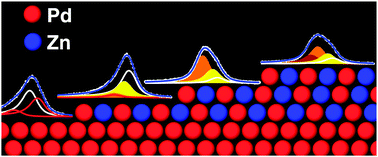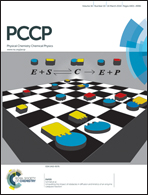Thermal evolution of the submonolayer near-surface alloy of ZnPd on Pd(111)†
Abstract
We have performed a high-resolution synchrotron radiation photoelectron spectroscopy study of the initial growth stages of the ZnPd near-surface alloy on Pd(111), complemented by scanning tunnelling microscopy data. We show that the chemical environment for surfaces containing less than half of one monolayer of Zn is chemically distinct from subsequent layers. Surfaces where the deposition is performed at room temperature contain ZnPd islands surrounded by a substrate with dilute Zn substitutions. Annealing these surfaces drives the Zn towards the substrate top-layer, and favours the completion of the first 1 : 1 monolayer before the onset of growth in the next layer.


 Please wait while we load your content...
Please wait while we load your content...